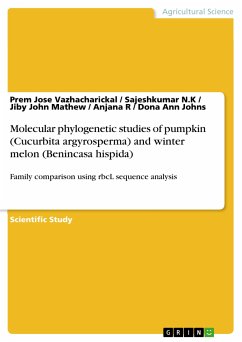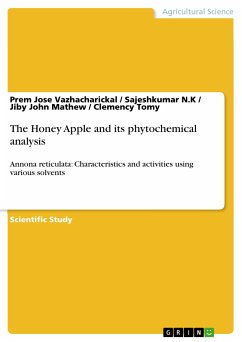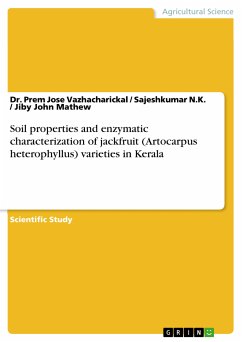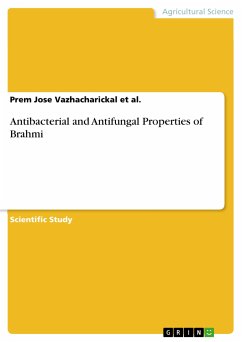Scientific Study from the year 2017 in the subject Agrarian Studies, Mar Augusthinose College, language: English, abstract: The Cucurbitaceae family is the one of the economically important group of plants in the tropics and subtropics. Molecular phylogenetic analysis were advanced after the introduction of molecular markers which give much precise results in analysis. Our current study based on the amplification of RuBisco enzyme using rbcL primer and subsequent validation using BLAST, FASTA and CLUSTAL-W in pumpkin and winter melon. The isolated and purified DNA samples were PCR amplified using rbcL primer and later sequenced using ABI Prism 377 DNA sequencer. Multiple sequence alignment algorithms and distance matrix were constructed using rbcL sequences in FASTA format were retrieved from GenBank. Phylogenetic tree was created using the distance based neighbour joining (NJ) and clustering algorithms method. Once divergences between all pairs of samples were determined, statistical cluster analysis and dendrogams examines the similarity among halotypes. Bootstrapping and jackknifing further increase the reliability estimates for the position of haplotypes within the evolutionary tree.
Dieser Download kann aus rechtlichen Gründen nur mit Rechnungsadresse in A, B, BG, CY, CZ, D, DK, EW, E, FIN, F, GR, HR, H, IRL, I, LT, L, LR, M, NL, PL, P, R, S, SLO, SK ausgeliefert werden.









